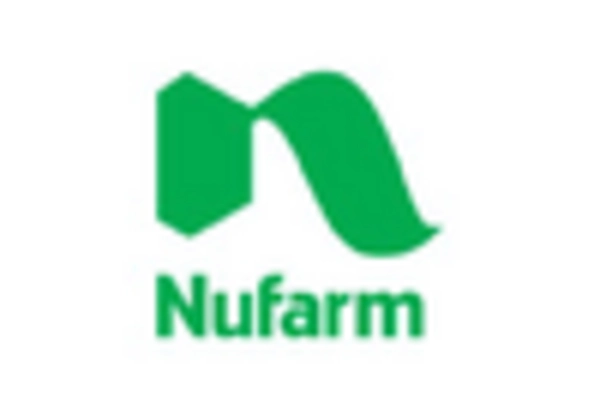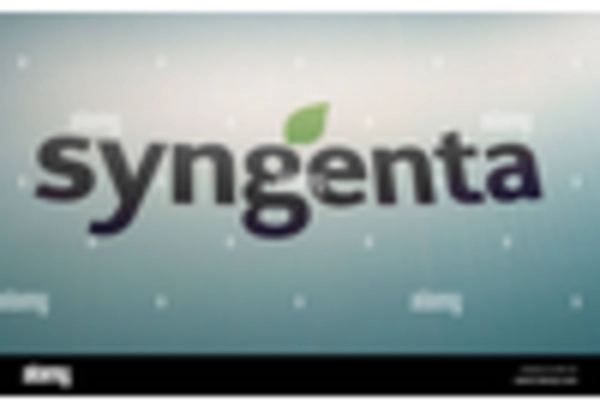Rising Demand for Organic Produce
The agriculture bactericides market is experiencing a notable increase in demand for organic produce. As consumers become more health-conscious, they are increasingly seeking food products that are free from synthetic chemicals. This shift is driving farmers to adopt sustainable practices, including the use of agriculture bactericides that are compliant with organic standards. According to recent data, the organic food market in the US is projected to reach $70 billion by 2025, indicating a robust growth trajectory. This trend is likely to propel the agriculture bactericides market as farmers look for effective solutions to manage bacterial diseases while adhering to organic regulations.
Increased Awareness of Plant Health
There is a growing awareness among farmers regarding the importance of plant health in achieving optimal yields. This awareness is fostering a proactive approach to disease management, leading to an increased adoption of agriculture bactericides. Farmers are recognizing that healthy plants are less susceptible to diseases, which can significantly impact productivity. The agriculture bactericides market will benefit from this trend, as more farmers invest in preventive measures. Data suggests that the market for agricultural inputs, including bactericides, is expected to grow at a CAGR of 5% through 2026, reflecting the rising emphasis on plant health.
Technological Innovations in Agriculture
Technological advancements are playing a crucial role in shaping the agriculture bactericides market. Innovations such as precision agriculture and smart farming techniques are enabling farmers to apply bactericides more efficiently and effectively. These technologies allow for targeted applications, reducing waste and enhancing the efficacy of treatments. As a result, the agriculture bactericides market is likely to see increased adoption of these innovative solutions. Furthermore, the integration of data analytics and IoT in farming practices is expected to optimize the use of agriculture bactericides, potentially leading to improved crop yields and reduced environmental impact.
Growing Investment in Agricultural Research
Investment in agricultural research is on the rise, which is likely to benefit the agriculture bactericides market. Research initiatives aimed at developing new and effective bactericides are gaining traction, driven by the need for sustainable solutions to combat plant diseases. This influx of funding is expected to lead to the discovery of novel compounds and formulations that can enhance the efficacy of bactericides. As a result, the agriculture bactericides market may experience growth as innovative products enter the market. The emphasis on research and development is crucial for addressing the evolving challenges faced by farmers in disease management.
Regulatory Changes Favoring Sustainable Practices
Recent regulatory changes in the US are favoring sustainable agricultural practices, which is positively impacting the agriculture bactericides market. The government is increasingly promoting the use of environmentally friendly products, encouraging farmers to transition away from conventional chemicals. This shift is likely to create new opportunities for agriculture bactericides that meet stringent regulatory standards. As farmers adapt to these changes, the market for sustainable bactericides is expected to expand. The agriculture bactericides market could see a surge in demand as compliance with new regulations becomes essential for maintaining market access.

















Leave a Comment